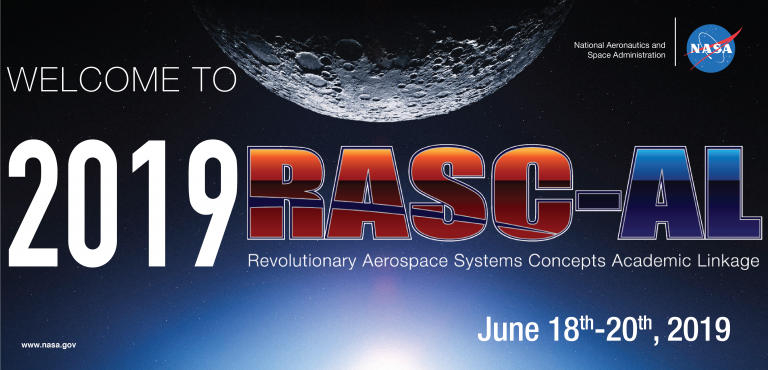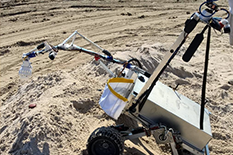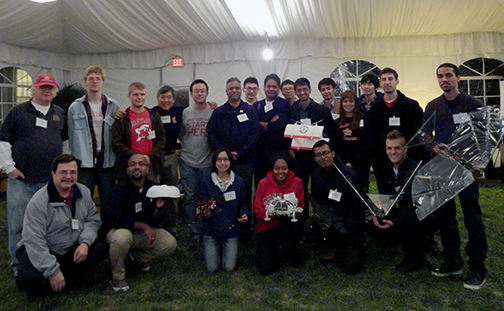News Story
NASA Robo-Ops Final Standings
The University of Maryland team took third place in the first NASA Robo-Ops design competition. Seven schools built robots capable of traversing the "Rockyard" at the Johnson Space Center and collecting samples (colored rocks). Each robot had to be controlled remotely from the home university. RH-EA1 (Remote Harvester - Earth Analog) did very well on the course, collecting three samples in the allotted time but missing out on the bonus that give the win to WPI. The University of Utah received second place overall.
The University of Maryland did very well throughout the competition. Chris Carlsen and Steven Friedman did incredible work as the "away team," including replacing a broken linkage in the manipulator end effector with only 30 minutes to go to the start time to allow the robot to be fully functional on the course. The rest of the team, located in the Jeong H. Kim Engineering Building, performed well controlling the vehicle remotely, but were challenged by insufficient communications bandwidth and camera resolution. The graduate students of the Space Systems Lab hosted the fabrication process and the ground control station, and provided useful advice throughout the process.
It was a great experience for the team and there are plans to return to the competition next year.
Published June 30, 2011







